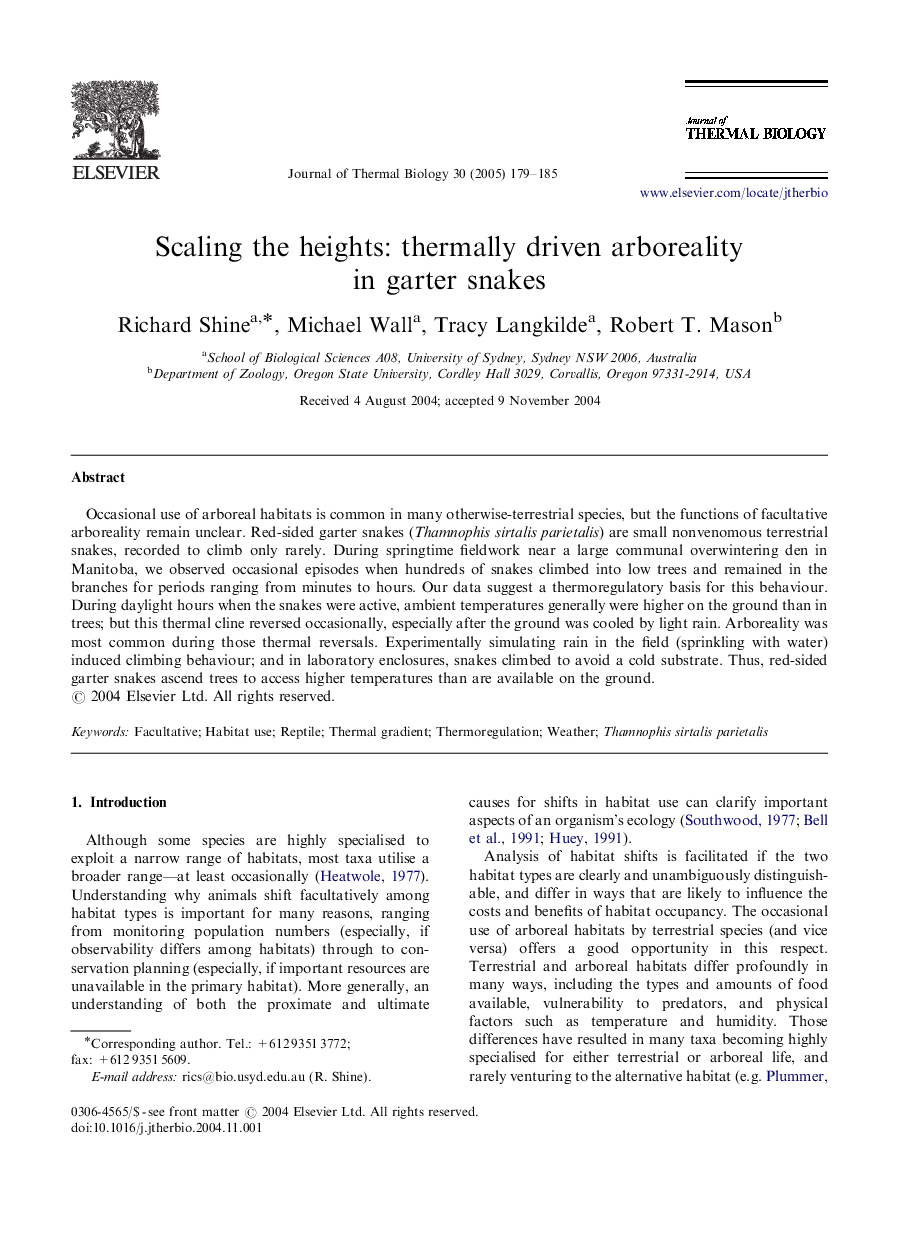| Article ID | Journal | Published Year | Pages | File Type |
|---|---|---|---|---|
| 9149008 | Journal of Thermal Biology | 2005 | 7 Pages |
Abstract
Occasional use of arboreal habitats is common in many otherwise-terrestrial species, but the functions of facultative arboreality remain unclear. Red-sided garter snakes (Thamnophis sirtalis parietalis) are small nonvenomous terrestrial snakes, recorded to climb only rarely. During springtime fieldwork near a large communal overwintering den in Manitoba, we observed occasional episodes when hundreds of snakes climbed into low trees and remained in the branches for periods ranging from minutes to hours. Our data suggest a thermoregulatory basis for this behaviour. During daylight hours when the snakes were active, ambient temperatures generally were higher on the ground than in trees; but this thermal cline reversed occasionally, especially after the ground was cooled by light rain. Arboreality was most common during those thermal reversals. Experimentally simulating rain in the field (sprinkling with water) induced climbing behaviour; and in laboratory enclosures, snakes climbed to avoid a cold substrate. Thus, red-sided garter snakes ascend trees to access higher temperatures than are available on the ground.
Keywords
Related Topics
Life Sciences
Agricultural and Biological Sciences
Agricultural and Biological Sciences (General)
Authors
Richard Shine, Michael Wall, Tracy Langkilde, Robert T. Mason,
